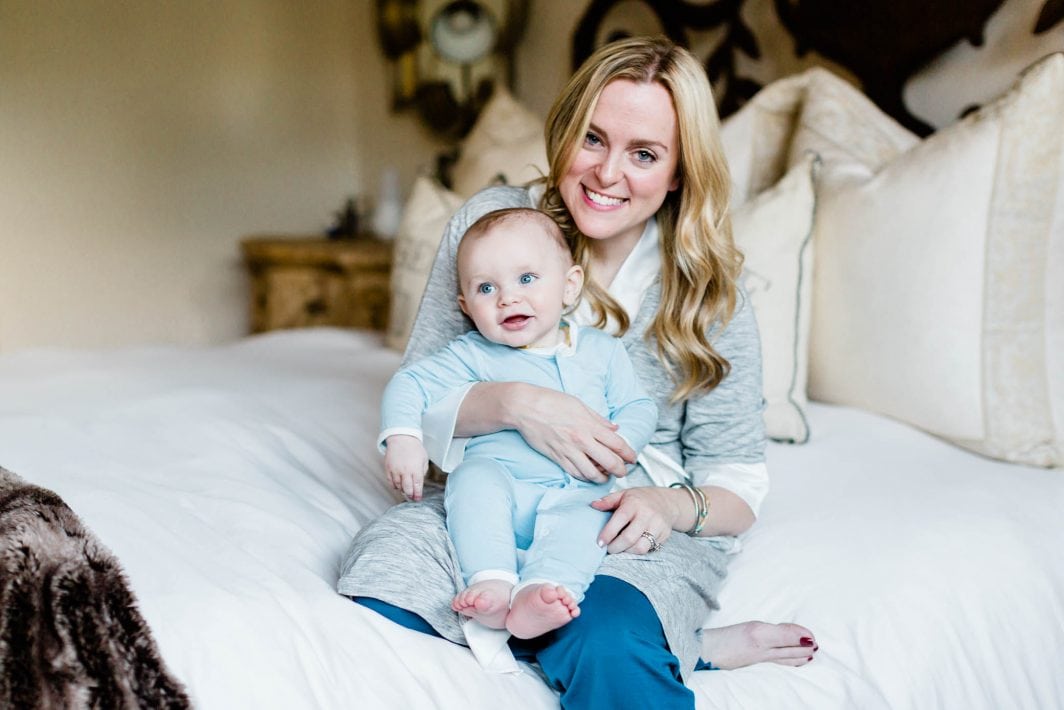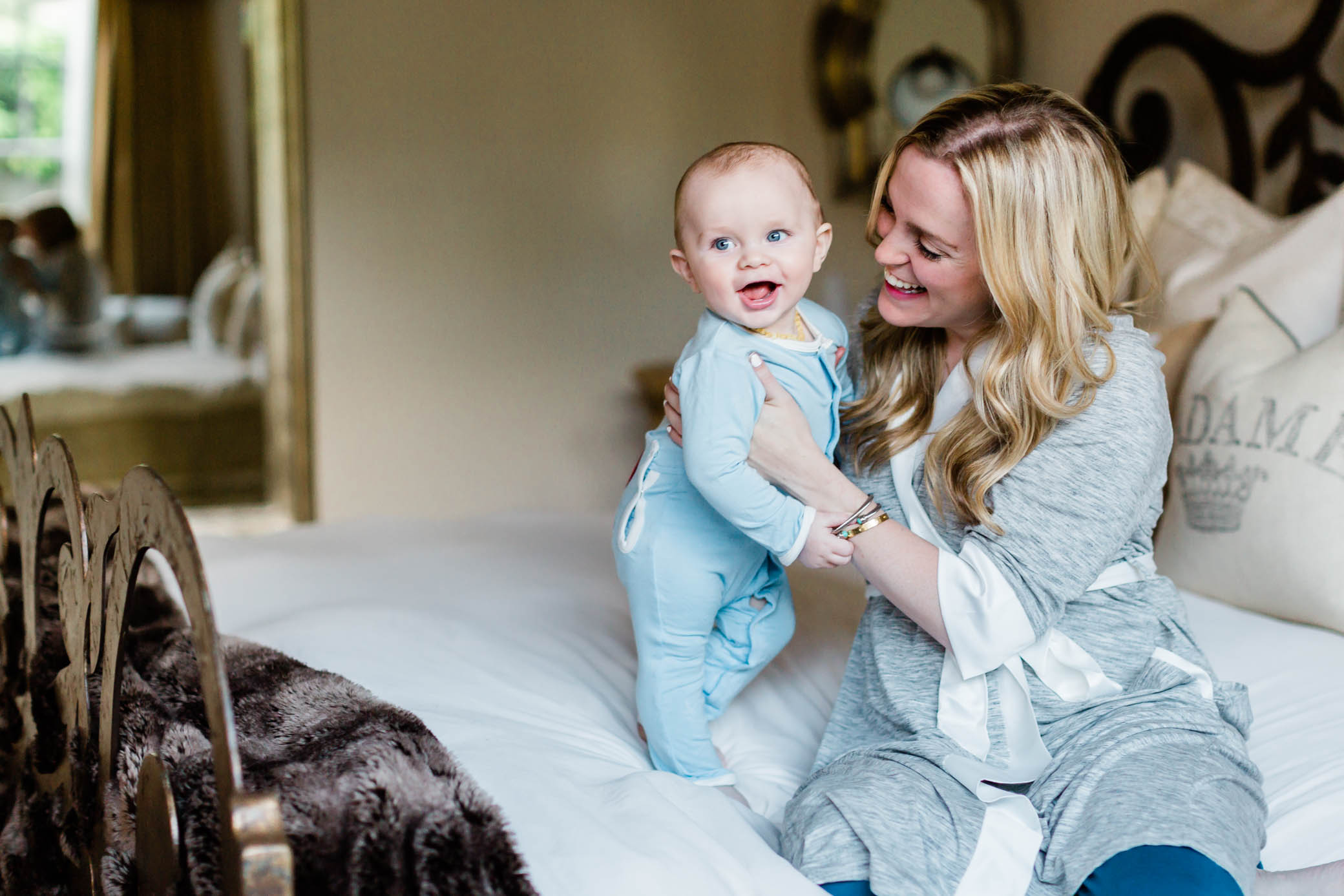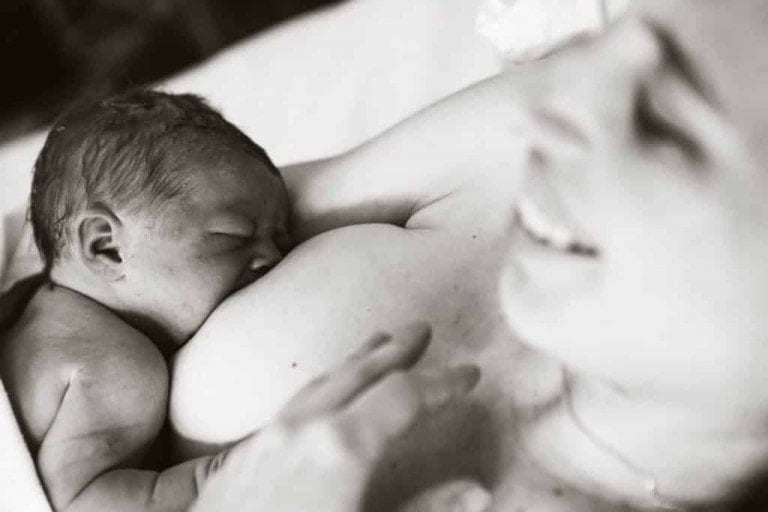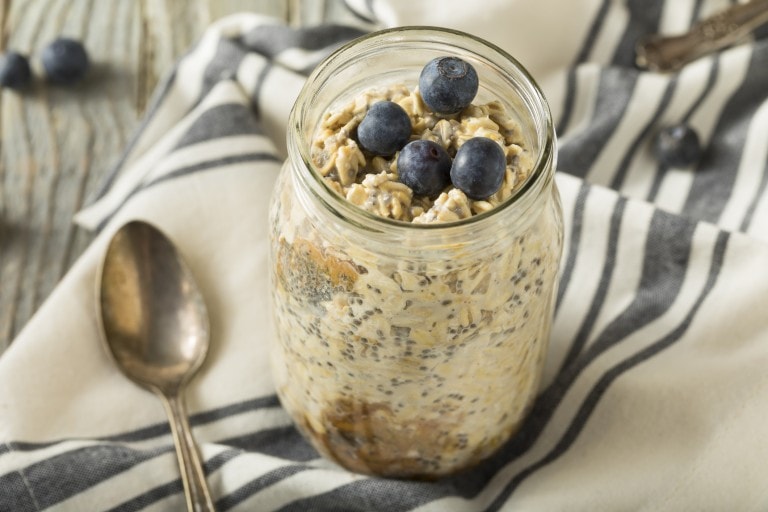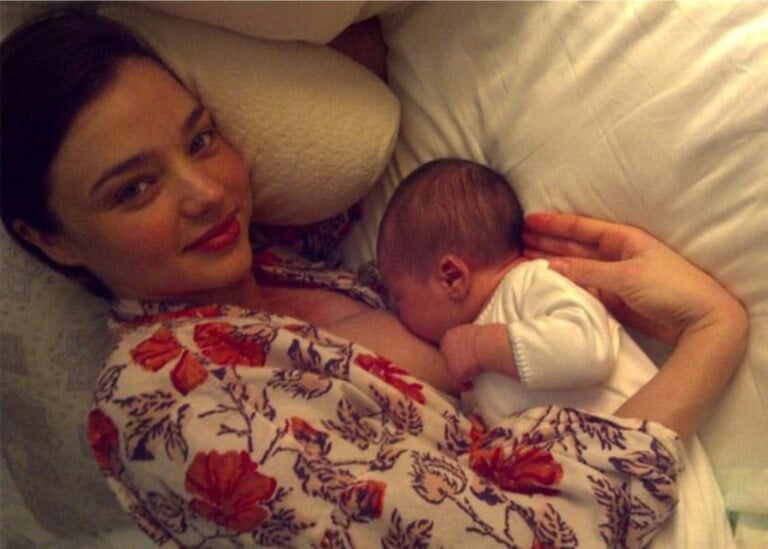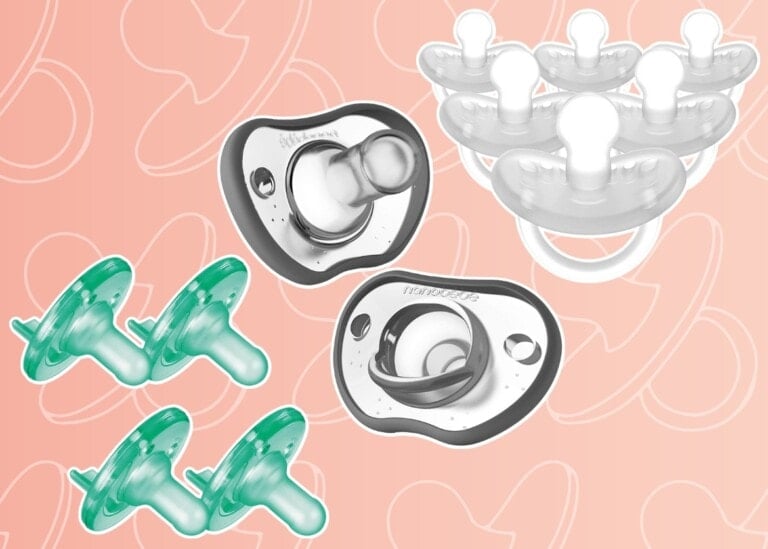We’ve all heard that “breast is best,” but when baby is born, sometimes breastfeeding doesn’t go exactly as you plan. Luckily, you can do some things from day one—even during your pregnancy—to have a better start at breastfeeding. And I must say, having a successful start is key to having a happier, easier, and longer breastfeeding journey.
The better you can troubleshoot the breastfeeding challenges you and your baby experience initially, the more likely things will work out and you’ll meet your breastfeeding goals.
11 Tips to Help You Have a Successful Start at Breastfeeding
1. Have Your Nursing Bras Ready Before You Have Baby
Many women will purchase one or two nursing bras during their pregnancy, but they do not know exactly what to look for and that several different styles of nursing bras are available. It’s good to know the difference between each and stock up.
You’ll want two to three nursing sleep bras, like this Organic Cotton Crossover Nursing & Sleep Bra.
Even though this is a sleep bra, it’s perfect for day and night! You will be at home mostly those first couple of weeks. You’ll be feeling like a zombie, so staying comfortable is crucial. Hopefully, you’ll be taking naps in between feedings. That’s why you’ll want to have some nursing sleep bras that will provide you with the proper support and quick and easy access for feedings during the day and night.
One structured nursing bra, like this Marvella Underwire-Free T-shirt Nursing Bra.
This breastfeeding bra combines the comfort of your favorite sleep bra with the support of a traditional bra. I particularly love that the material is ultra-soft, stretchy, and can expand to accommodate fluctuating breast sizes. There’s no underwire, but it still provides excellent support, perfect for going out of the house on a lunch date or meeting.
And one to two classic nursing bras, like this Simply Sublime Nursing Bra.
This is a great one to have in your dresser drawer. This bra is designed to fit multiple cup sizes as your breasts fluctuate throughout the first couple of months and is great for pretty much any occasion. It’s a product favorite that you can’t go wrong with.
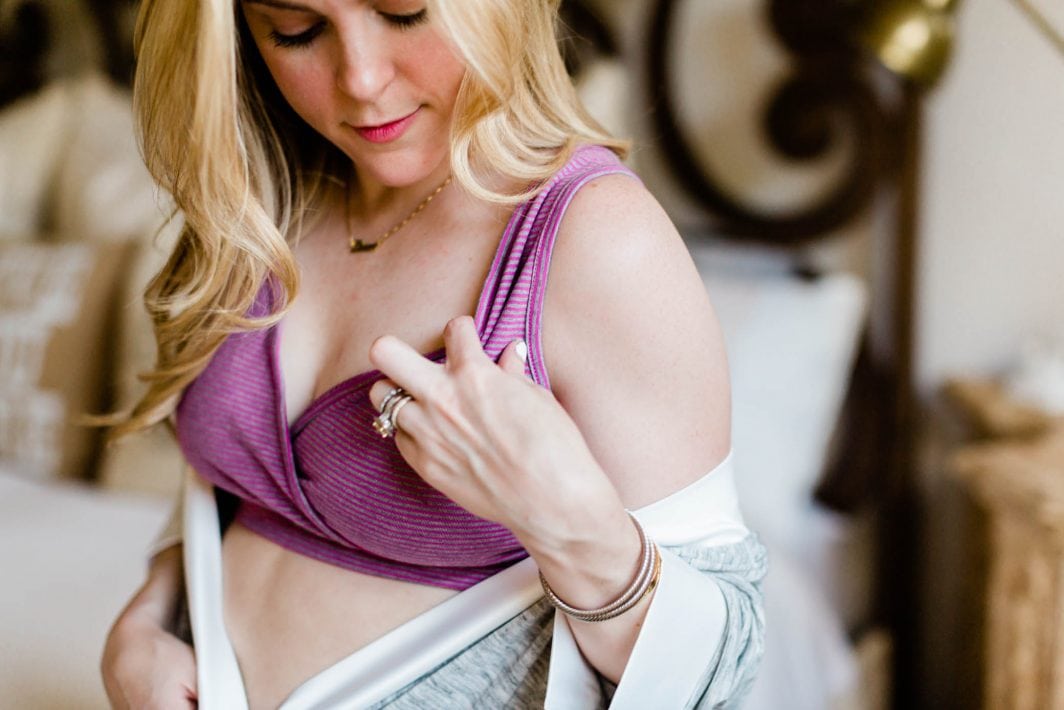
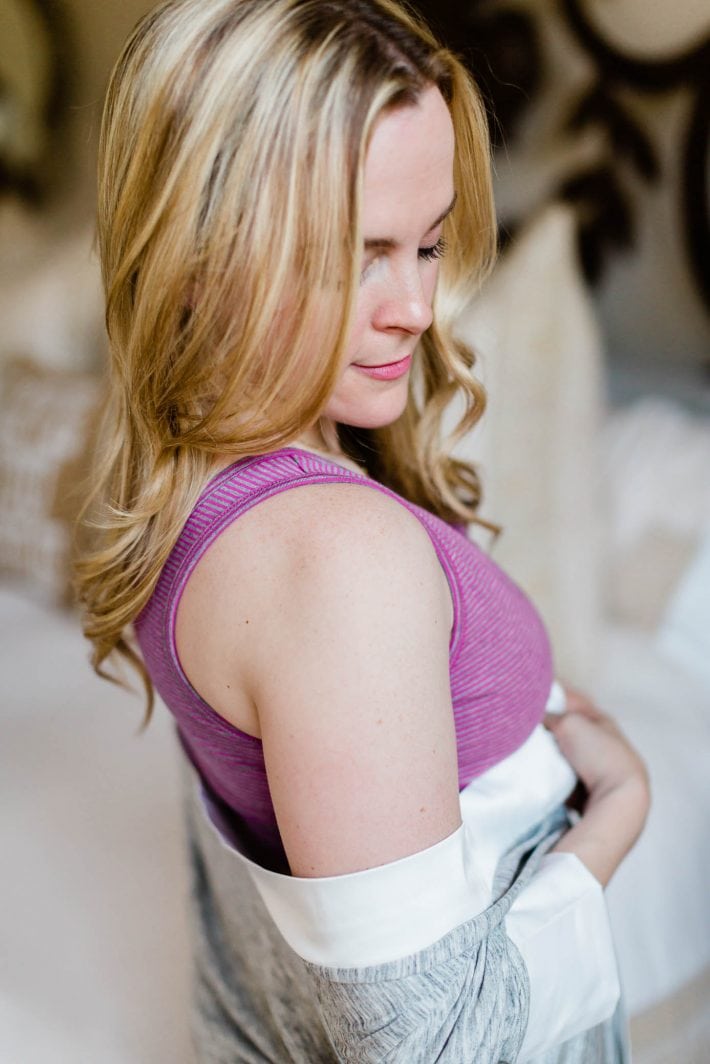
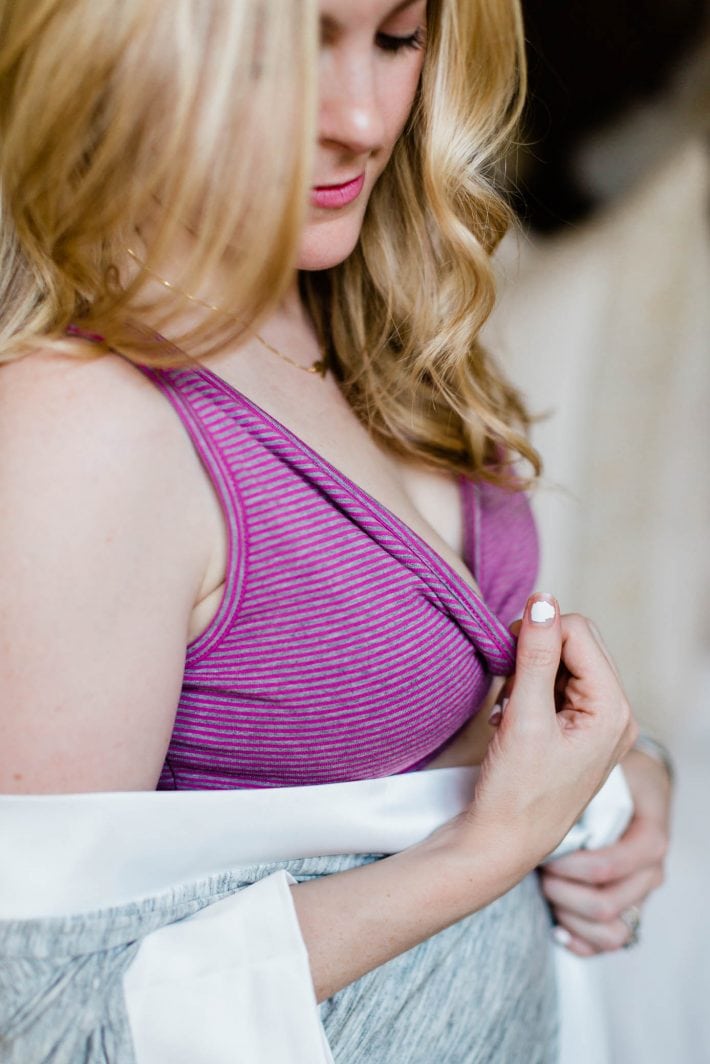
You will be set with these bras no matter what you’re doing. Having them ready to go before you have your baby means you won’t have to think twice about doing research and rush ordering them in the middle of the night postpartum.
2. Hold a Newborn Before You Have Your Newborn
You’d be surprised how many people—including women—have never held a baby. And let me tell you, there’s a difference between holding a 6-month-old baby and a newborn. I recommend practicing holding a newborn before you have your baby. Newborns require more head and neck support and support on their bum since they don’t have the strength to hold their head up. Also, practice burping them, rocking them, and swaddling them.
The more confident a woman is about holding and taking care of a newborn, the more confident she will be when it comes to breastfeeding. By practicing these things in advance, you won’t be as nervous when your little one arrives. This will also help reduce your anxiety when it comes to breastfeeding.
3. Do Skin-To-Skin as Soon and as Often as Possible
Doing skin-to-skin immediately after birth isn’t always possible for every woman since some babies need immediate medical attention, but as soon as you can hold your baby, place her on your chest and do skin-to-skin. There are so many incredible benefits when it comes to skin-to-skin, and one of those benefits is it can help with initial breastfeeding. This is why I recommend wearing a nursing bra like this one during labor that is easy to pull down and connects either in the back or in the front so that you can quickly place baby on your bare chest. After birth, you won’t want to pull something over your head.
4. Work on a Deep Latch
Establishing a good, deep latch should begin from the first nursing session. It may not happen immediately and take a little while, but it’s something that you should continue to work on until baby can latch correctly on her own. This will also save your nipples from feeling sore or getting cracked.
5. Breastfeed Often
“When in doubt, whip it out.” This is one of my favorite quotes. I like all new mothers to know that you can never overfeed a breastfed baby. It’s impossible to nurse the baby too much. Baby will let you know when she has had enough. Breastfeeding frequently and on baby’s demand will help you build your milk supply and perfect your baby’s latch. You may feel like all you do is breastfeed, but that is entirely normal, especially in the beginning. Baby should eat every 2 to 3 hours in the first weeks, and sometimes even more often. Keep at it. It will get better.
6. If You’re Having Issues, Get Help Immediately
If you and baby continue to have difficulty nursing—the latch isn’t correct, you still feel pain while nursing, or baby doesn’t seem to settle down—contact a local IBCLC (International Board Certified Lactation Consultant). If you’re in the USA, go here. For outside the USA, go here. The sooner you can see someone, the sooner you can resolve the issue(s). Don’t wait for things to go from bad to worse. If you wait, you could experience sore, cracked, bleeding nipples, not to mention a very hungry baby. By not getting help early it could lead to stopping breastfeeding altogether.
7. Keep Your Baby With You as Much as Possible
Once your baby is born, you want to have baby with you as much as possible. There are benefits to keeping baby nearby for both you and baby. By being close, your bodies can communicate with one another. It tells your body that it’s time to make milk, your chest actually will increase in temperature a bit to help keep baby warm, and it helps soothe baby since she is familiar with your smell. She is learning to trust. Breastfeeding often helps your uterus continue to contract and heal to return to its original size.1 You are learning about one another, and you can do so better and more quickly when being close by and responding to baby’s needs.
8. Postpartum, Wear Clothing That Makes Nursing Easy
Wearing the proper clothing—not just nursing bras—is essential. Otherwise, you’ll have to take off your whole shirt, lift your dress, or step out of your cute romper. That just won’t do.
You should be in bed resting and healing when you have a baby. I mean, you did just give birth! Your body needs to recover, but we know you must also care for your new baby. This is why you need a good set of functional, soft, and forgiving pajamas like these Davy Nursing & Maternity pajamas. After you give birth, you will still look about 6 months pregnant, so these PJs will be the perfect thing to wear in the hospital and at home. I highly recommend them!
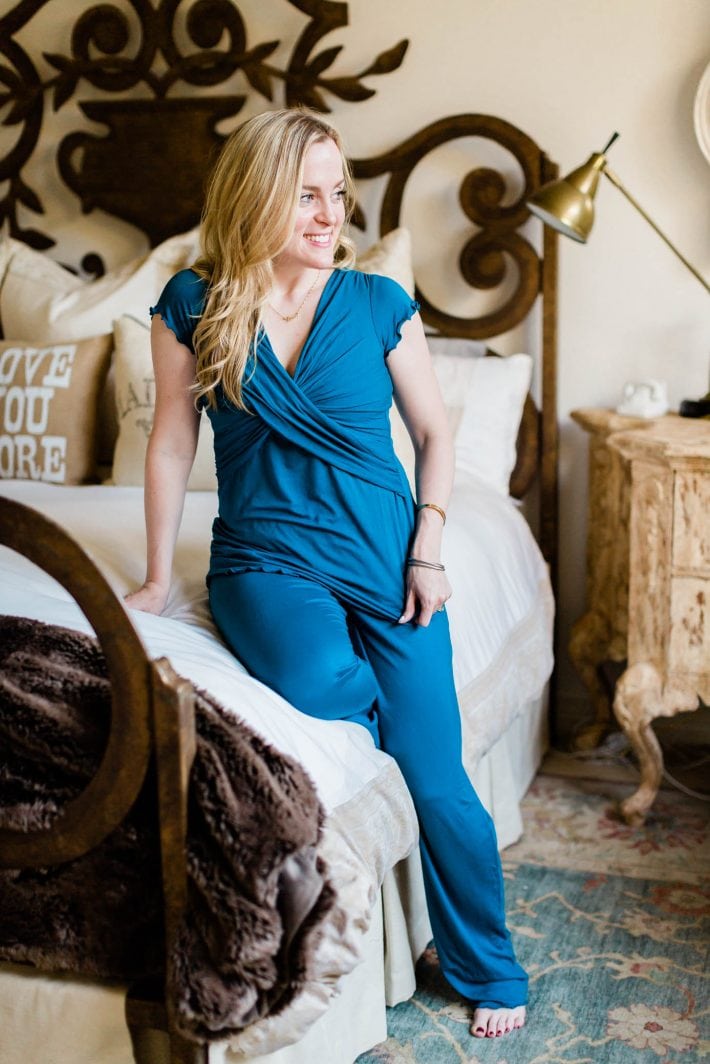


I also recommend having a soft robe that isn’t long but not too short. A robe helps you cover up when family visits you in the hospital room or house. The UPS man has seen me in my robe plenty of times. You may be getting a lot of visitors, so a robe will allow you to quickly cover up and uncover if baby gets hungry soon after.
I particularly love this Emmaline Maternity & Nursing robe because it’s lightweight, so I will stay warm but not get overheated. It also has deep pockets so I can grab and bring everything I need for a nursing session. And it ties in two places, so nothing will come undone and reveal anything I don’t want to show. This robe is a perfect option for an expecting and nursing mom. 🙂
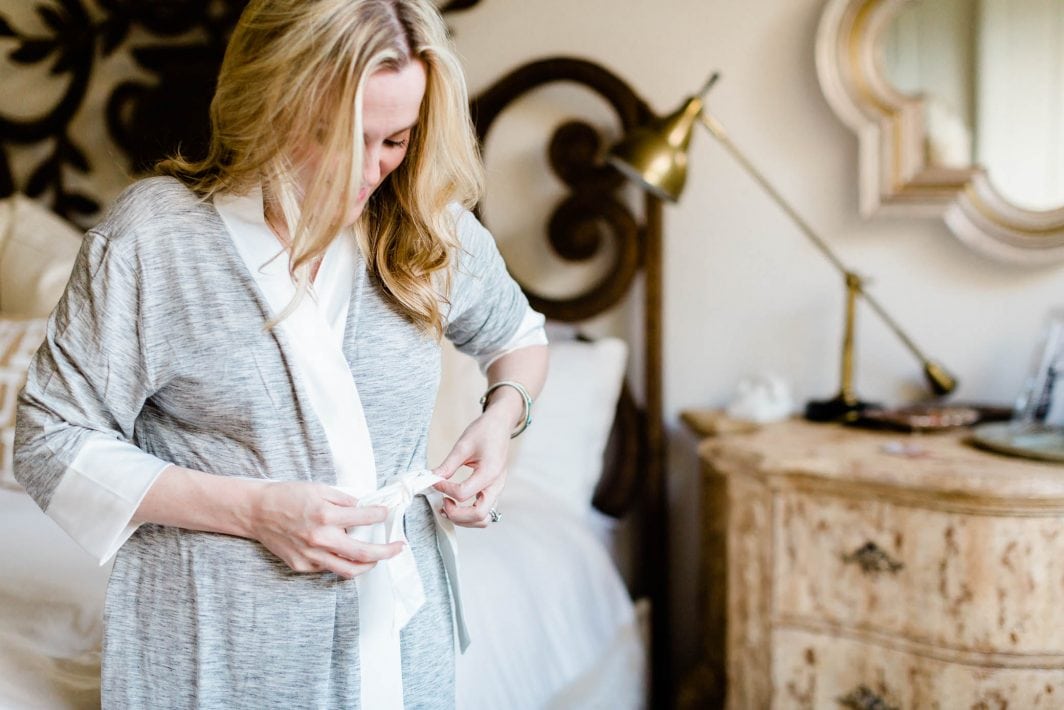
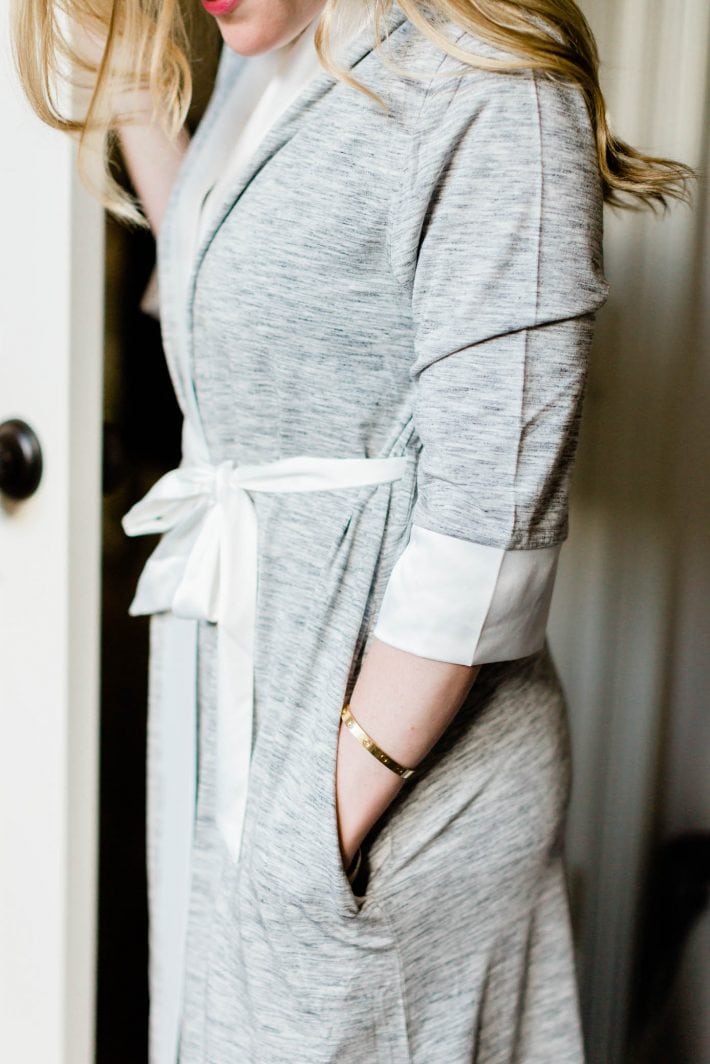
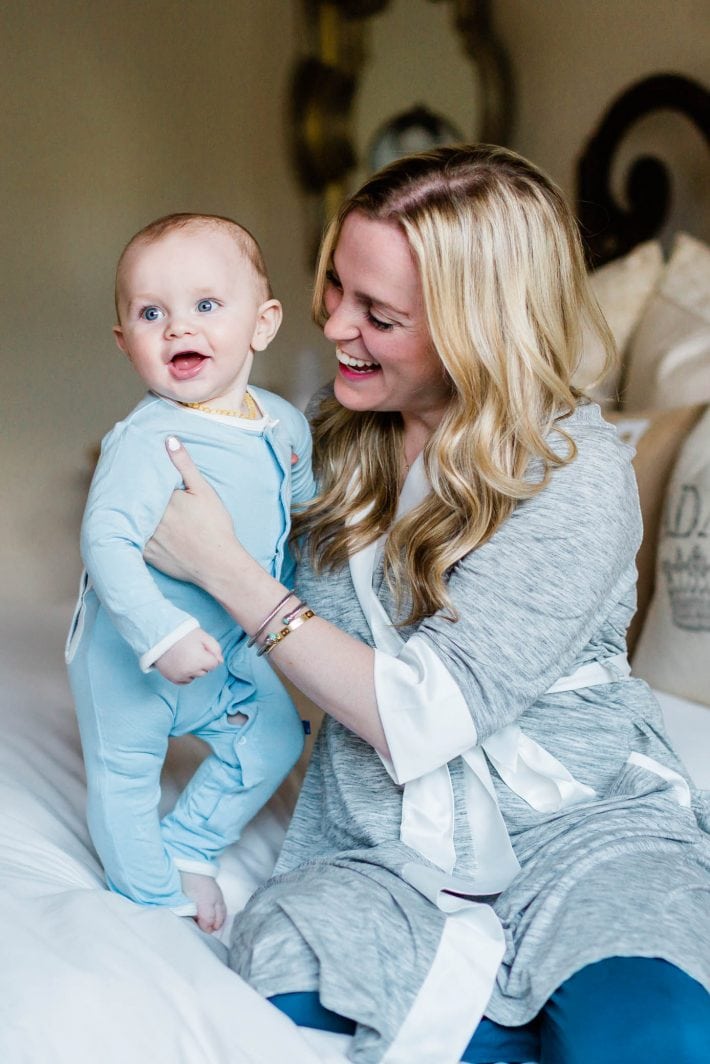
9. Delay the Use of a Pacifier or Bottle
My son takes a pacifier, which I am very grateful for, but it wasn’t something I introduced until he was a few weeks old. It’s perfectly okay for babies to use pacifiers and bottles. However, it’s recommended that we should wait a few short weeks until we develop a good breastfeeding routine. You will be their pacifier in the beginning.
Them suckling on your breast is good to soothe them, keep them full, and stimulate your breasts to make more milk. We don’t want to develop any nipple confusion because they could become tired from sucking on the pacifier, becoming frustrated that there is no milk coming out, and then not nursing well. We waited 3-4 weeks before we gave our son a pacifier. However, if your baby has colic and you need other tools to soothe baby, speak with your child’s doctor and do what is best for your family and child.
10. Drink Lots of Water
Besides baby and hopefully the help around you, water should be your new best friend. We’re supposed to drink eight glasses of water a day (8-ounces each), but you should drink more when breastfeeding. Breast milk is made up of 90% water, so the more water your body uses for breastfeeding baby, you should drink the same amount of water and more. As a rule of thumb, get in the habit of drinking an 8-ounce glass of water every time you breastfeed. Baby should be drinking 8-10 times a day, so you may even want to drink a little more than that to meet not only baby’s needs but your hydration needs, too. Think of it this way: when baby drinks, mommy drinks.
11. Try To Relax as Much as Possible
Relaxing is one of the best things you can do when starting to breastfeed. The more you are stressing out and pressuring yourself and feeling anxious about the whole thing, the more difficult breastfeeding will be. Relax those shoulders, put your feet up, bring your baby to your breast (nose to nipple), and take a deep breath. Soon enough, you’ll both become breastfeeding pros!
